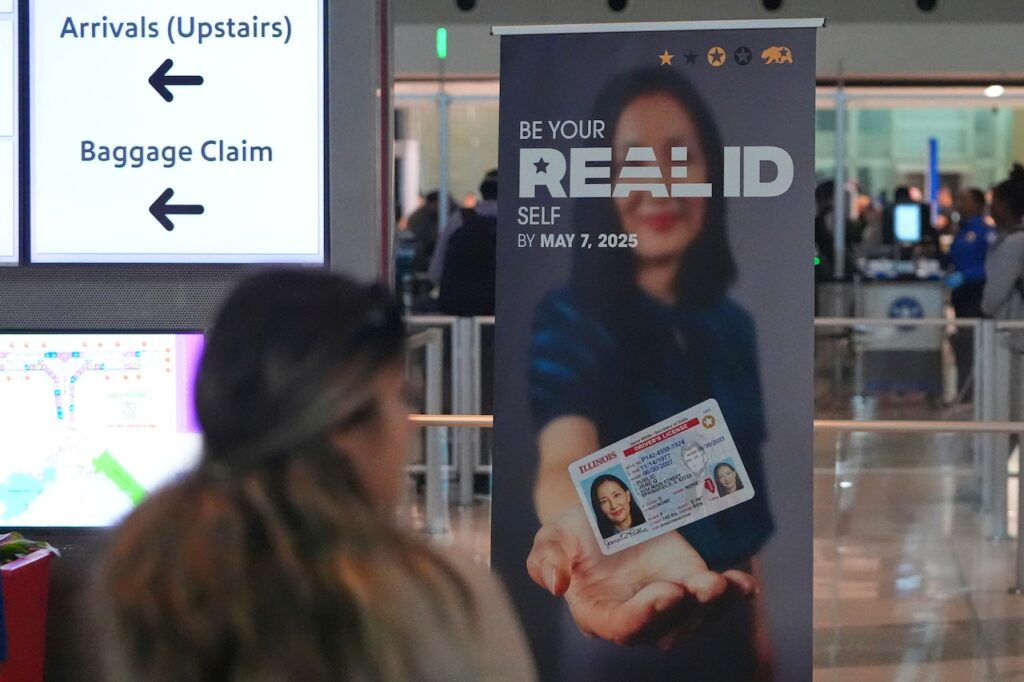The long-awaited deadline for the REAL ID requirement at U.S. airports has arrived, but passengers without the security measure on their identification can still pass through security, but with a catch.
Starting May 7, the Transportation Security Administration (TSA) is no longer accepting state-issued IDs that are not federally REAL ID-compliant at the agency’s checkpoints.
However, because some passengers at U.S. airports still do not have REAL ID-compliant documents, Homeland Security Secretary Kristi Noem said that these passengers can still fly — for now — but they can also expect additional scrutiny and screenings.
According to the TSA, passengers with non-compliant IDs will be directed to a separate area and receive added screening. This includes travelers who are TSA PreCheck passengers.
Read More: You need a REAL ID to fly in a plane starting May 7 — except in 5 states
An identity verification process may then proceed in which a TSA officer collects a person’s name and address to confirm their identity, the agency added.
“If your identity is confirmed, you will be allowed to enter the screening checkpoint, where you may be subject to additional screening,” the TSA said. “You will not be allowed to enter the security checkpoint if you choose to not provide acceptable identification, you decline to cooperate with the identity verification process or your identity cannot be confirmed.”
Those without a REAL ID document or an accepted alternative form of ID should also arrive early at the airport to avoid delays, which could be caused by additional and advanced screenings.
A REAL ID-compliant document, such as a driver’s license or state-issued ID card, will have a star in the top right corner of the ID.
Read More: RMV monitoring potential for ‘phased’ Real ID enforcement
Enhanced driver’s licenses (EDLs) and enhanced state ID’s, which feature an American flag icon, also meet REAL ID requirements. These documents provide proof of identity and U.S. citizenship and allow Americans to enter Canada, Mexico and some Caribbean countries through land or sea ports of entry.
EDLs are available through the states of Michigan, Minnesota, New York, Vermont and Washington.
Other documents eligible to get around the REAL ID requirement that passengers can present include a U.S. passport, a foreign passport, a U.S. Department of Defense ID or a federally recognized Tribal Nation photo ID.
Expired IDs up to two years past their expiration from the approved list of identifications can also be accepted, TSA indicated.
The REAL ID requirement also applies only to people age 18 years or older. Children and teenagers under 18 are not required to provide identification when traveling domestically, TSA said.
Read More: Real ID compliance date nears: Hampden County Millennials, Gen Z yet to catch up
REAL IDs are now also needed to access federal government buildings, military bases and nuclear power plants.
The effort to implement REAL ID nationwide was first signed into federal law in 2005 after the Sept. 11, 2001, terrorist attacks, but until now, it has been continuously delayed.
In Massachusetts, residents can acquire a REAL ID by providing their birth certificate or passport and verifying their Social Security number with a Social Security card or a W-2 form. To prove their Massachusetts residence, a lease, mortgage or utility bill can be presented.
Bay State residents can start the REAL ID application process online via the RMV’s Online Service Center and schedule an in-person appointment to verify their documents at an RMV Service Center or at a AAA branch, for those with an AAA membership.
More information on how to obtain a REAL ID in Massachusetts can be found on Mass.gov.


